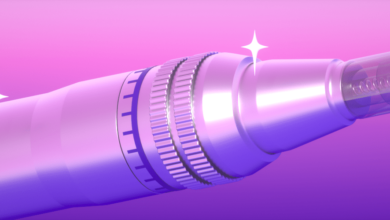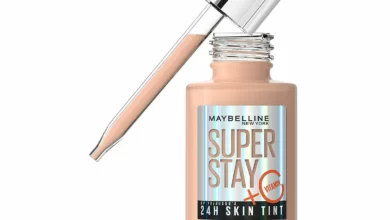The Changing Tides of Anti-Aging Langauge
Over the past few years, though, there’s been a shift in the conversation around aging in the context of beauty. In 2017, Allure announced that it would stop using the term anti-aging, and in the years since, many brands have swapped out the phrase on their product packaging in favor of euphemisms like “Ageless” (Tula), “Pro-Age” (Dove), or “Slow Age” (Vichy). In addition to the semantic shift it meant moving away from the negative connotations associated with “anti-aging,” a number of brands have embraced an age-inclusive visual in recent years. 2005 was the first time that actors in their 50s served as beauty ambassadors (Susan Sarandon for Revlon and Christie Brinkley for Covergirl), and in the time since Dame Helen Mirren (78) and Jane Fonda (85) have shown up in ads as spokesmodels for L’Oréal’s “Age Perfect” line, while Neutrogena has tapped Jennifer Garner (51), Nicole Kidman (56), and Kerry Washington (46) to represent its Rapid Wrinkle Repair Cream.
In theory, all of this should signal a step in the right direction toward making consumers feel good about themselves as they age. But in reality, it’s the same messaging cloaked in slightly different packaging. In fact, this new packaging is even more effective: Market research predicts the global anti-aging market to grow at a compound annual growth rate (CAGR) of 6.7 percent from $62.6 billion in 2022 to $93 billion in 2027.
Though the language and faces promoting these products have changed, they’re still designed to convince us that there’s a “right” way to “age gracefully”—which, for most, simply isn’t attainable. Aging is a natural, biological function we can’t fight, and accepting that reflects no failure of morality or fortitude. There’s also no singular aesthetic of getting older, and the solutions the anti-aging market offers are for a problem that doesn’t even exist.
The curse of the anti-aging narrative
According to Dr. Yip, the anti-aging ideal begins as soon as people start understanding what beauty and aging means. Research1 has shown that children begin to develop a level of self-awareness and understanding appearance around age five, and this continues to evolve into adolescence.
Despite the shifting language we’ve seen in the past few years, the desire for young women to embrace anti-aging interventions is on the rise. “The global ideal of youthfulness demands that we look somewhere between 18 and 35—and the older we get, the more intervention is required to stay looking in that range,” says Elise Hu, beauty journalist and author of Flawless: Lessons in Looks and Culture from the K-Beauty Capital. “So it makes total sense that while your chronological age is somewhere in the ideal 18 to -35 range, you’d spend money on procedures to try and stay there.”
In 2012, fewer than 20 percent of US women between 18 and 24 years old considered anti-aging skin care to be important, according to a survey by NPD Group, a market research company. But by 2018, another US-focused study found that more than half of women in the same demographic wanted to add age-prevention products into their routines. What’s more, according to a 2023 report from the American Academy of Facial Plastic and Reconstructive Surgery, 78 percent of members (all of whom are facial plastic and reconstructive surgeons from around the world) “believe there will be a greater emphasis on earlier maintenance and age prevention starting in the 20s-30s to forestall bigger procedures and surgeries for later down the road.”
“Anti-aging creates anxiety for a lot of women because they’re told their worth is tied to youth. This reinforces the mindset to purchase more products for more worth.”—Jenny C. Yip, PsyD
The issue, though, is that most of the anti-aging interventions consumers are shelling out their hard-earned cash for simply… don’t work. Despite the lofty promises that many brands make around their formulas, “There is no anti-aging product that can erase 10 to 20 years of sun damage or a compromised barrier, [which are] two of the main external factors associated with aging,” says Fayne Frey, MD, a board-certified dermatologist and author of The Skincare Hoax: How You’re Being Tricked into Buying Lotions, Potions & Wrinkle Cream. “The FDA considers over-the-counter skin-care products as having no medical value, so the efficacy of these claims doesn’t have to be proven.”
All cosmetic and skin-care products are designed to beautify and promote attractiveness, not help cure, treat, or prevent an ailment. So if an eye cream or moisturizer could truly change the skin’s structure, it would have to be classified as a drug by the US Food and Drug Administration (FDA). “If you are looking for ‘the fountain of youth in a bottle,’ you will not find it in over-the-counter skin-care products,” adds Dr. Frey .
Even the most highly-regarded anti-aging creams (think: La Mer) only appear to work because they’re primarily moisturizers that increase the skin’s water content “and temporarily improve the appearance of very fine lines, especially around the eyes where the skin is very thin,” says Dr. Frey. But this change is only temporary because it can’t work on a biological level meaning it’s impossible to make skin younger.
Not even Botox and fillers guarantee to shave years off of your appearance, because aging isn’t just about volume loss. “We lose bone, fat, collagen, and elastin, which is why we start to sag and look hollow,” says Jessie Cheung, MD, board-certified dermatologist. “Fillers can combat signs of aging by contouring and replacing volume; however traditional ones won’t contribute to improvements in skin quality because they can’t erase sun damage, such as broken blood vessels or sunspots, which are known causes for one’s skin to look old.”
All to say, there’s no single solution to undo the natural aging process. This reality has allowed the beauty industry to create a vicious cycle: Brands make women feel like they need to buy their products to stay looking young—and with that, uphold their value in society—and when these products don’t deliver on their promises, it keeps them coming back for more. “It’s a construct designed to keep us consumed with insecurity and consuming products,” says Jessica DeFino, beauty culture critic and author of The Unpublishable newsletter. “It’s a fear-based framework meant to elicit an emotion on which companies can capitalize and keep capitalizing, as an ‘anti-aging’ goal that can never be met.”
The language around anti-aging may be shifting, but the message remains the same
As an increasingly younger demographic of women has begun to add age-defying skin care into their routines, brands have tweaked their marketing accordingly. Quintessential millennial beauty brands like Glossier, Drunk Elephant, and Glow Recipe forego any terms related to the word aging in favor of wellness-forward phrases like “plumping,” “firming,” and “bounce-restoring”—all of which essentially mean the exact same thing as their predecessor. These carefully picked words make it seem like the products will restore your skin to its former glory without shame, but ultimately, “they reinforce a fear about aging attractively,” says Loretta Ciraldo, MD, a board-certified dermatologist.
The vilification of traditional anti-aging terminology has given rise to these more acceptable alternatives, but ultimately, the same messaging perseveres. “’Non-aging,’ is the groundbreaking term that recently replaced ‘slow aging,’ ‘preserv-aging,’ ‘aging gracefully,’ and ‘addressing mature skin’ as the way to capitalize on women’s fear of living long-but-wrinkly lives while avoiding the ire of anti-anti-agers,” says DeFino.
“Being stuck in this loop actually disempowers society by continuing to perpetuate the unrealistic and unachievable standards”—Jessica Defino
This is meant to distract you from the fact that brands are selling the same types of formulations that promise the same unrealistic results—only now, it’s being done under the guise that you’re in control, because they’ve purportedly removed the stigma around aging. But it’s clear that companies want us to “continue to chase youth as a beauty ideal, no matter what kind of language they’re slapping on the bottles,” says Hu.
Regardless of the language that’s being used, upholding the youth-as-the-beauty-ideal perpetuates the same problem as it always has. Spending money to achieve a more youthful appearance, “Might give a sense of empowerment, but being stuck in this loop actually disempowers society by continuing to perpetuate the unrealistic and unachievable standards,” says Defino.
How do we work against the ‘anti-aging’ ideals?
It’s easy to say, “just stop buying anti-aging products and embrace your skin’s natural aging process,” because ultimately, “if we stopped buying [anti-aging] eye creams, those companies wouldn’t make them.” says Dr. Frey. But, it’s much harder for that to actually happen. Real change will require more significant societal shifts.
The fixation on youthful-looking skin only stops when we act together to examine our individual attitudes and beliefs toward aging and divorce them from the pervasive culture of anti-aging. “It works in the same way diet culture has been challenged, and so many have divested from it,” says Hu. “Just as we have with fatphobia, it means changing our own attitudes and language around getting older. So check your consumer habits and the standards you normalize.” Self care goes hand-in-hand with community care, and it’s important that society advocates against ageism across all sectors—not just in beauty, but in the workplace, in health care, and in our own inherent biases, too.
Until there’s a real shift in attitudes toward aging, the beauty industry will continue to exploit and capitalize on consumers’ insecurities about looking older—just with slightly different language that’s been tweaked to fit the current social climate.
We’ve only just begun to see shifts in the conversation around aging, and “without change from a psychological standpoint that our appearance doesn’t equal our worth, the same performative beauty tropes will continue to be on the shelves, because companies have their sales as proof to back their decisions,” says Dr. Yip.
Well+Good articles reference scientific, reliable, recent, robust studies to back up the information we share. You can trust us along your wellness journey.
- Valle, A., Massaro, D., Castelli, I., & Marchetti, A. (2015). Theory of Mind Development in Adolescence and Early Adulthood: The Growing Complexity of Recursive Thinking Ability. Europe’s Journal of Psychology, 11(1), 112-124. https://doi.org/10.5964/ejop.v11i1.829
Our editors independently select these products. Making a purchase through our links may earn Well+Good a commission.



